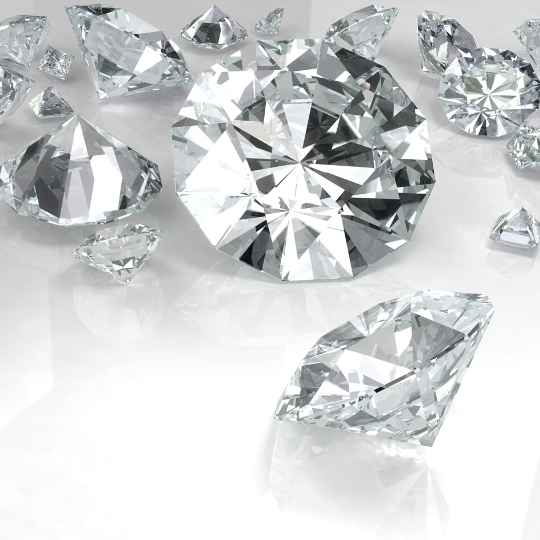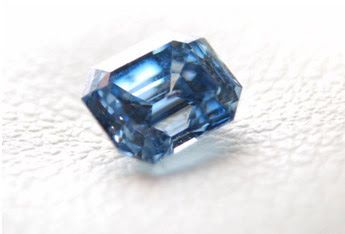Diamonds From Remains & Breast Milk Jewellery – Ultimate Expressions of Emotion?

Jewellery has always been the epitomising symbol of love between two people – spouses; lovers; a mother and child; dear friends. Family heirloom jewellery, for example, represents a strong connection with our ancestors. But, just when we think we know how strong the emotional significance of jewellery can be, technology brings us some developments that most of us probably won't know whether to characterise as "strange and eerie" or "simply amazing"! Today, it is possible for a lactating mother's milk to be converted into a piece of jewellery, and yes, it's okay to hold your breath for a moment - for a deceased human-being's ashes to be converted into a diamond!
It is said that the feeling of love for another person is as close to "perfection" as anything human-beings can experience. It is obviously an attempt to freeze the memory of "love for another" that has led to the inventions of making jewellery from a mother's milk and turning a loved one's remains into a dazzling gem-stone that will live on, perhaps more enduring than a thousand photographs.
Death is something that we can all relate to. We all worry about the moment when we will have to come face-to-face with it, and perhaps even worse, the time when the ones we love more than our own lives will have to. Many of us live to experience this. But, true to the words of Longfellow in his 'Psalm of Life', most of us feel that "Dust thou art, to dust returnest", indeed was not spoken of the soul, and if we believe that the soul does live on forever, then if one thinks about it - why not our ashen remains too? Perhaps it's not for the faint-at-heart, but let's take a look at how the process works.
Creating a Diamond From Human Remains:

A finished diamond is seen after the process of turning cremated ashes into a precious stone at the Swiss-based company Algordanza. - Caters News Agency
It's been recently doing the rounds in the news that a Swiss company called 'Algordanza', which translates as "remembrance" gives people the opportunity to memorialise themselves or people they love by converting cremated ashes into a diamond. The company was founded by a man called Rinaldo Willy, in 2004. The diamonds are created in a high-tech laboratory. Carbon from the ashes is extracted by using a chemical process, and then made into graphite. The graphite is then exposed to extremely high temperature and pressure, replicating conditions at the centre of the earth where diamonds are formed naturally. Just a few weeks later, a diamond is formed and presented to the bereaved client.
The company is said to currently produce approximately 850 such "Memorial Diamonds" every year. People have paid between $5,000 to $32,000, depending on the size and some other factors.
Struggling to explain the practice, Willy has been quoted as saying, "Our process is purely physical-but if the deceased had blue eyes, and the diamond turns out blue, you can be sure that the family will say, 'Oh, it's exactly the colour of his eyes'." He says that the company refrains from adding more carbon to the remains and from artificially colouring the stones, as well, stating, "We believe in no manipulations. As soon as you have additives, there's something in the diamond that doesn't belong."
The colour of the diamonds are not predetermined - they pretty much come as a surprise. According to Willy, the colour of each Algordanza diamond results from the specific combination of trace elements present in an individual's body. False teeth, titanium hips, or the remnants of chemotherapy can all impact colour. Nitrogen creates a yellow tinge. Traces of phosphorescent chemicals can produce diamonds that glow in the dark. Bluish diamonds are a result of boron in the ashes, although an excess will turn a diamond black.
Most of Algordanza's diamonds are eventually crafted into jewellery, worn by clients who want to be able to carry the presence of their loved ones with them at all times. Sometimes, it may be the deceased person's wish that the diamond be buried somewhere or released into the sea.
Jewellery Made From Breast Milk:
An incomparable human relationship of the purest kind is that of a mother and child. Which new mother doesn't spend endless, tiresome hours feeding and caring for her infant? A woman called Allicia, from Rhode Island has been making beautiful jewellery mementos from breast-milk, for mothers who want to immortalise precious memories of breastfeeding for themselves and their children.

The way the process works is that you send Allicia a small amount of the extracted milk, usually in a zip-lock bag and double-bagged. This can be placed in an envelope and sent along. Allicia says she only needs about 2 or 3 teaspoons to work her magic.
Allicia's company is called "MommyMilkCreations".
On receiving a breast milk sample, Alicia 'plasticizes' it, then moulds it into miniature shapes such as hearts, moons, stars or tiny feet and hands, depending on the design requirement.
The 'milk bead' is then set in clear resin and silver hooks and chains are added. A special message can also be included.
What started out as an experiment for herself, and has taken years to get perfect, has
turned into a rip-roaring business for Allicia, who today has so many orders that she finds it hard to keep up with the demand. She currently has a 12-month-long waiting list!
Allicia receives orders from mothers all over the world, including UK, Belgium, Germany, Australia, Spain, Italy and China.
Whether one subscribes to the phenomena of jewellery made from breast-milk or the mortal remains of human-beings being converted into diamonds or not, no one can deny that these practices definitely do stem from a very deep place of love and emotion, and "love and emotion" has always been at the very foundation of the jewellery business.

